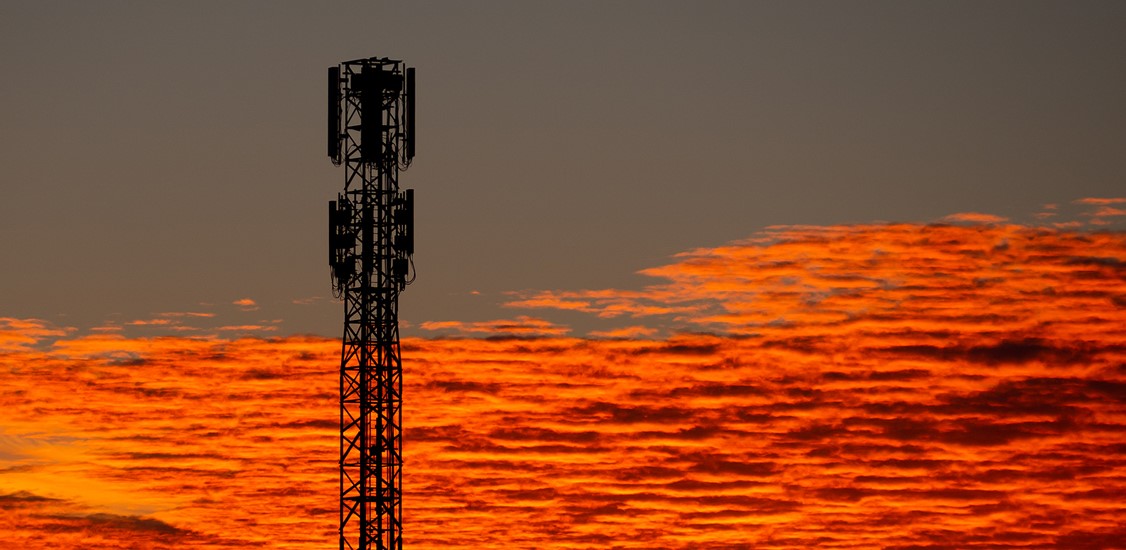It is commonly understood that 5G cell equipment can run hotter than 4G equipment. Care should be taken when erecting a new 5G site, and especially when retrofitting a 4G site with extra 5G equipment, to avoid overheating.
The risks of overheating in concealed cell sites are well-known. Excessive heat can cause equipment to malfunction and even fail, leading to service degradation or interruption. The potential problem can be easily avoided, however, by conducting thorough thermal analyses of cell sites in preparation for 5G rollouts and service upgrades.
5G complicates thermal performance
From the beginning, 5G equipment was going to have different thermal characteristics than 4G. That was because of both cellular network usage patterns and the nature of some of the technologies adopted in the standard.
Historically, network usage is “up and to the right.” An increasing number of people use cellular networks more often to share and consume greater amounts of content. An increasing amount of that content is audio and video (which represent increasing amounts of data), as people post to social media, video conference with each other, and stream music and movies. It was a certainty that 5G networks would carry significantly more traffic than 4G networks, and indeed they do.
Base station configurations vary widely, whether 4G, 5G, or some combination. That said, with each 5G base station carrying vastly more traffic and operating over more frequency bands than 4G, many 5G base stations could end up consuming two or three times the amount of power. The amount of waste heat rises concomitantly.
Hot technology
Yes, there are power-saving features built into the 5G standard, but these measures merely mitigate the increase in the amount of power that 5G networks consume.
The power situation is compounded by 5G’s adoption of high energy active antenna units (AAUs). Unlike 4G antennas, 5G antennas are multiple input multiple output (MIMO) arrays of steerable antennas, and massive MIMO antennas require additional power. The amount could be 1,000 watts of power or more per sector.
That is only one estimate. The amount of additional power required at each site – and the amount of waste heat that will have to be accounted for in concealed sites – will depend on the frequency band, the radiated power, and other factors.
Compounding the waste heat issue in concealed sites, 5G transmission equipment generally requires more power to get the same coverage as 4G. All else being equal, a signal at a longer wavelength will propagate farther than a signal at a shorter wavelength. Much of the spectrum allocated to 5G is at shorter wavelengths than the spectrum allocated for 4G.
The choice of spectrum band from among those allocated to 5G spectrum is an additional factor. The bands allocated to 5G vary greatly in terms of wavelength and frequency. A 5G cell operating in the C-band, for example, will require less power to get the same coverage as a 5G cell using millimeter-wave (mmWave) spectrum.
It is important to note that the configuration of each 5G cell is variable. A 5G cell site in a densely populated area will likely be equipped with more antennas than a more remote site where network traffic is lower, and therefore it is likely to draw more power and generate more waste heat.
RUs and antennas
Historically with 4G, all the active electronics of a cell site were located together in a base station, usually integrated in the same physical enclosure, with the antennas mounted some distance away, such as at the top of a tower. While it was possible to co-locate the 4G radios and 4G antennas, and there are advantages to doing so, the most common configuration had antennas separate from the rest of the base station.
The introduction of 5G and the development of the Open Radio Access Network (O-RAN) architecture changed that. A key element of O-RAN is the disaggregation of cellular equipment. That includes the ability to separate the radio unit (RU) away from the rest of base station electronics. In 5G it has become standard practice to integrate RUs with antennas.
Wireless carriers wish to roll out 5G as economically as possible. For many reasons, adding 5G radios and antennas to sites where 4G antennas are already mounted is an attractive option.
While it is sensible to exploit existing infrastructure, thermal considerations dictate proceeding with caution, especially given an enclosed environment like a concealed macro or small cell site (e.g. a cabinet, a cupola, a spire). In such cases, the addition of any new heat source will raise the ambient air temperature inside an enclosure originally designed to handle only equipment that emitted little if any heat on its own.
Excessive heat can affect the concealed node's performance, degrade sensitive electronics, and even lead to equipment failure. Whether or not the problem manifests depends on the particulars of the specific installation, but it has become especially noticeable with the ramp in installations of 5G sites including those operating in the C-band.
Complicating the issue is that the world has been experiencing an increase of excessively warm weather. Elevated ambient temperatures must also be taken into account when preparing sites for delicate electronics, including both 4G and 5G systems.
Thermal analysis
A thermal analysis will indicate if a concealed cell site will be prone to heat-related problems, and if so, the evaluation of the site’s thermal budget will indicate which remedy will work best. Thermal analysis requires expertise to both interpret results and to know how those results inform the choice of the best remedy to employ for any given cell site.
We recommend employing finite element analytical (FEA) tools. These tools are necessary to create computational fluid dynamics (CFD) models that are used to calculate heat transfer, considering conduction, convection, and radiation through solid and fluid bodies. This computer modeling is a valuable tool, useful for evaluating and optimizing various design options, such as fan placement and vent geometry, prior to fabrication. Virtual models are cost efficient and provide valuable design insights to reduce overall design and implementation time.
Simulation results can also be confirmed with physical testing. On-site testing is of course valuable but can be costly in terms of budget and schedule. Raycap has partnered with third-party test facilities to simulate high ambient temperature conditions in thermal chambers to verify simulation results and gain approval from original equipment manufacturers (OEM) including Samsung, Fujitsu, Ericsson and Nokia.
Raycap has consulted numerous standards to determine thermal testing and analytical criteria, including Telcordia GR-487, GR-3108, and ASHRAE Climatic Design Conditions, as well as some telecommunications industry standards.
Exceeding a cell site’s thermal capacity has many remedies, ranging in ease-of-installation and in expense. They include selecting a larger enclosure volume, providing adequate ventilation in an existing enclosure, or installing an active cooling solution whether it be through the addition of fans or an HVAC-based solution.
Conclusion
In the 4G era, the need to evaluate the thermal conditions of a concealed cell site was far less acute than it is with the advent of 5G. Potential problems are easily avoided, however, by making thermal analysis part of 5G rollout standard operating procedure and adopting a flexible policy about cooling options.




















